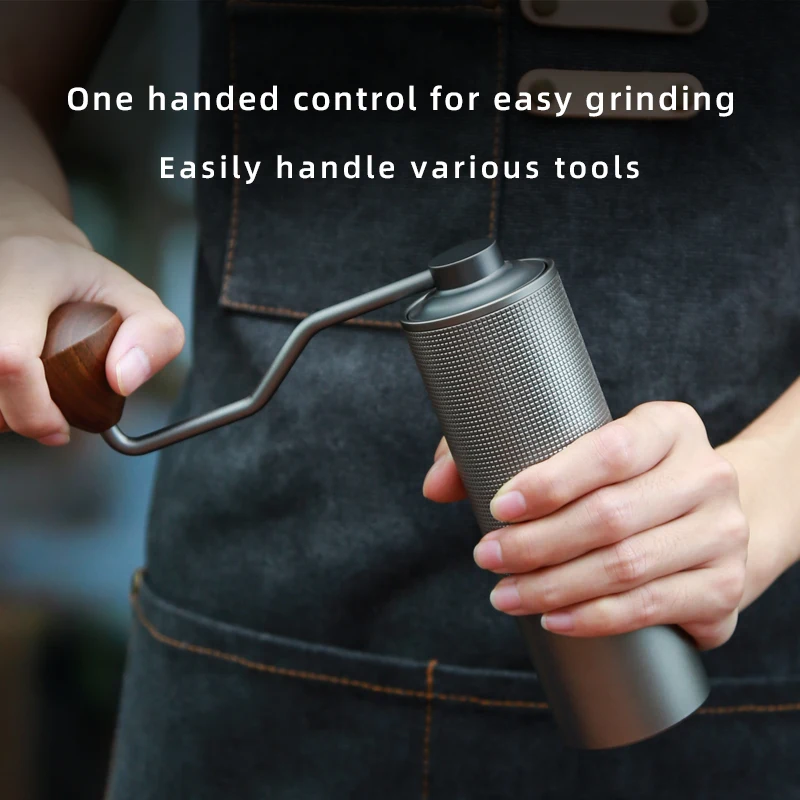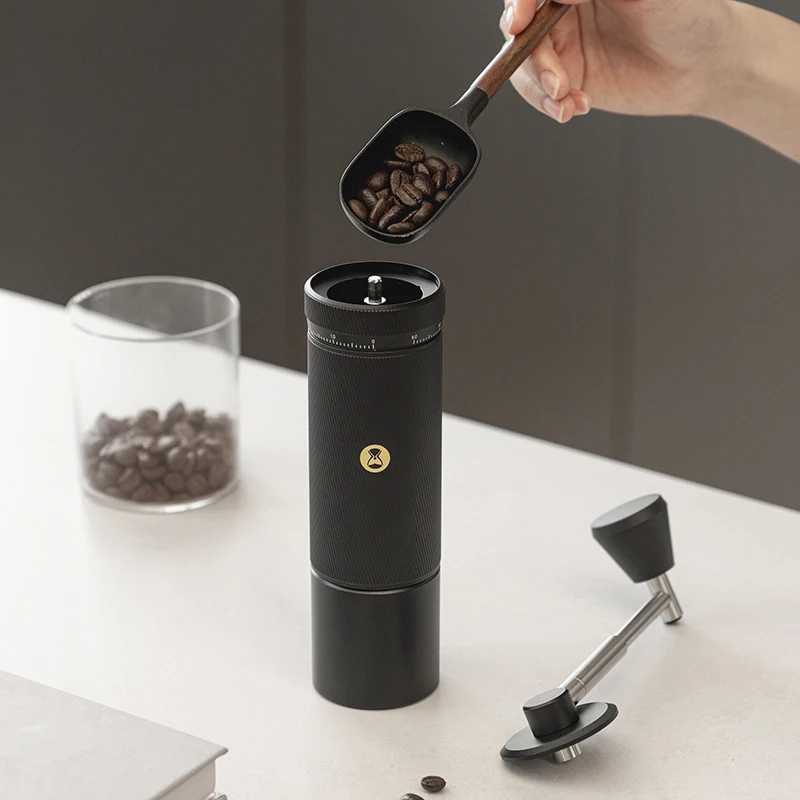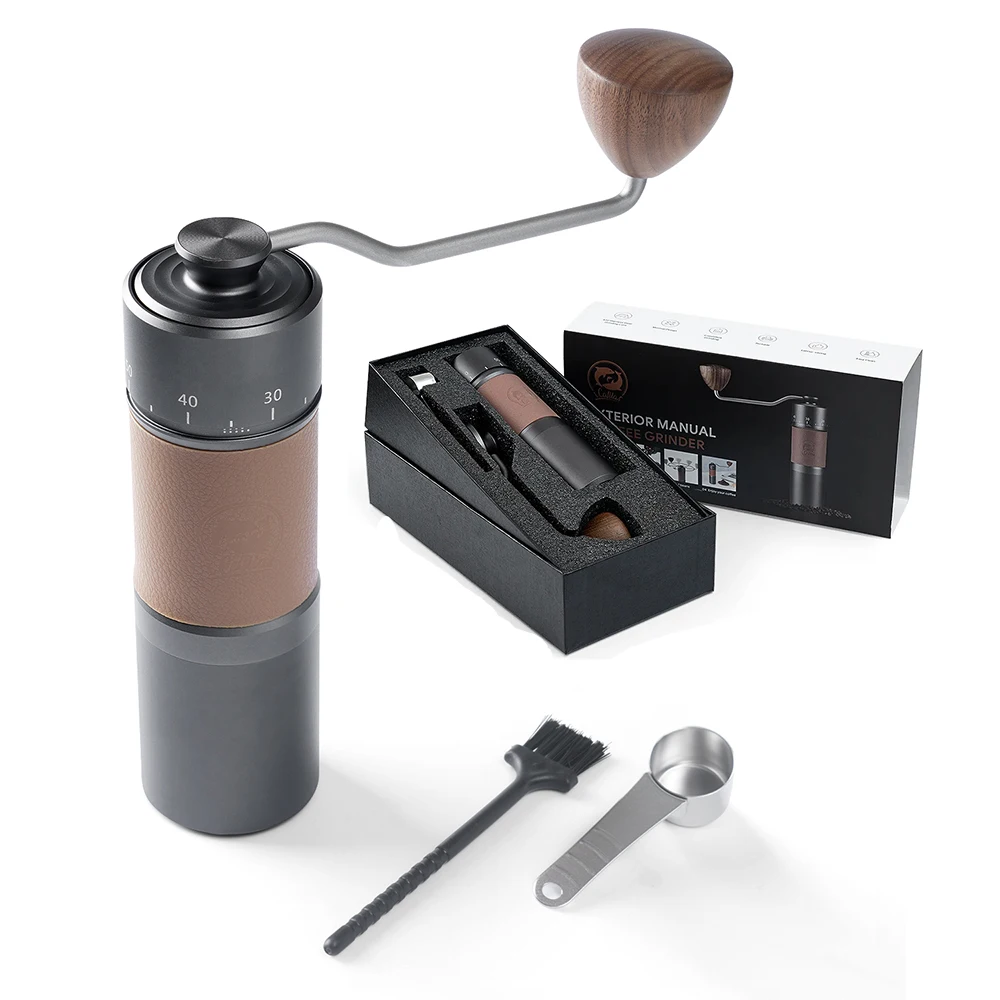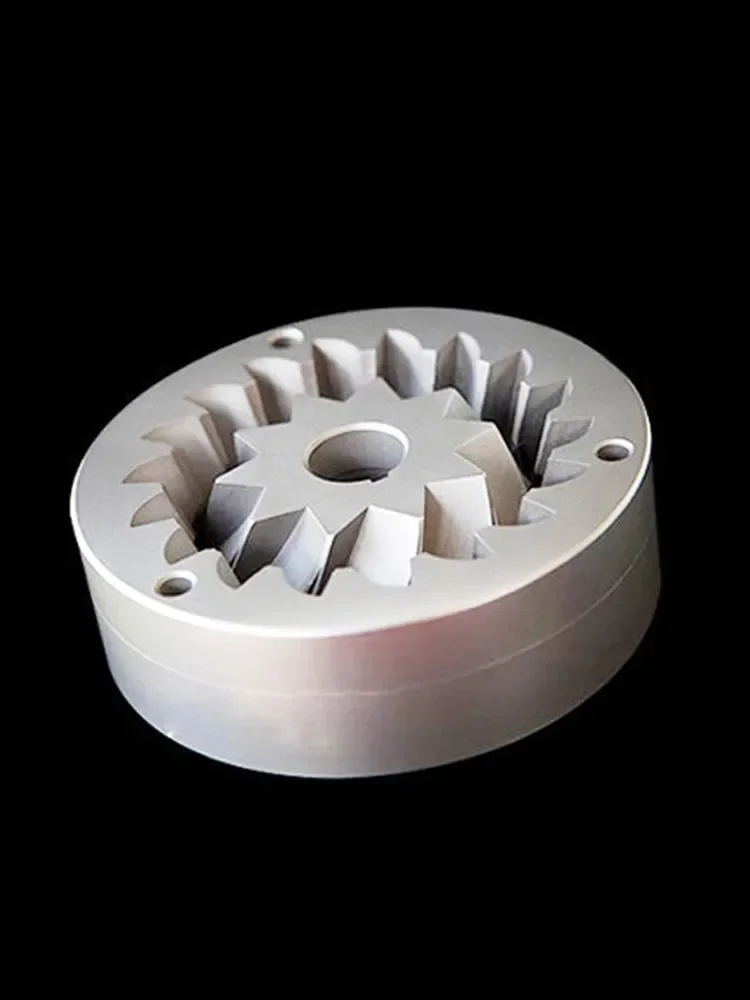Introduction: Why Replaceable Burrs Matter for Your Coffee Journey
The heart of any coffee grinder lies in its burrs—the specialized metal or ceramic pieces that crush coffee beans into consistent grounds. Replaceable burrs represent a significant advantage for coffee enthusiasts who understand that quality equipment is a long-term investment rather than a disposable tool.
While quality burrs can last through hundreds of pounds of coffee, they eventually wear down, leading to less consistent grounds and ultimately affecting the flavor in your cup. The difference between brewing with worn versus fresh burrs is immediately noticeable—extraction becomes uneven, with some grounds too fine and others too coarse, resulting in coffee that’s simultaneously bitter and sour.
Investing in a manual coffee grinder with replaceable burrs means embracing both sustainability and quality. Instead of replacing an entire grinder when performance declines, you simply refresh the most critical component. This approach not only saves money over time but ensures your morning brew maintains its excellence year after year.
Throughout this guide, we’ll explore top-tier manual grinders with replaceable burrs, delve into burr types and materials, and share practical advice on maintaining manual coffee grinders to maximize their lifespan. By the end, you’ll have all the knowledge needed to make an informed investment in your coffee future.
Our Top Manual Coffee Grinders with Replaceable Burrs
We’ve rigorously tested dozens of manual coffee grinders, evaluating them based on grind consistency, ease of burr replacement, build quality, and value. Here are our top selections that combine excellent performance with the long-term advantage of replaceable burrs.
1. The Precision Plus Grinder
This premium manual grinder features 38mm conical steel burrs that deliver exceptional consistency across all grind settings, from fine espresso to coarse French press.
Key Features:
– Precision-machined stainless steel body and components
– 15 distinct, click-adjusted grind settings
– Smooth-turning handle with ergonomic design
– 30g bean capacity
– Complete disassembly design for thorough cleaning
Burr Specifications:
The hardened steel conical burrs are precision-manufactured to tight tolerances, ensuring consistent particle size. Replacement burrs are readily available and can be changed with basic tools in under 10 minutes.
Pros:
– Exceptional grind consistency
– Virtually zero wobble or play in the mechanism
– Silky-smooth grinding action
– Burrs maintain sharpness through 1500+ pounds of coffee
– Compact for travel while maintaining premium performance
Cons:
– Higher upfront investment
– Slightly smaller capacity than some competitors
– Requires occasional alignment checks
Ideal for: The dedicated coffee enthusiast who demands the absolute best grind quality and appreciates fine craftsmanship.
2. The Traveler’s Companion
Designed with portability in mind without sacrificing quality, this grinder offers remarkable performance in a compact package.
Key Features:
– Lightweight yet durable aluminum construction
– 35mm ceramic conical burrs
– 20g capacity ideal for 1-2 cups
– Tool-free disassembly
– Foldable handle for compact storage
Burr Specifications:
The ceramic burrs resist corrosion and heat build-up while grinding. Replacement is straightforward, requiring just a few minutes and no specialized tools—perfect for maintaining excellent performance even while traveling.
Pros:
– Ultra-portable design
– Excellent grind consistency for a travel grinder
– Ceramic burrs stay cool during grinding
– Simple maintenance
– Affordable replacement burrs
Cons:
– Smaller capacity requires multiple grinds for larger batches
– Slightly slower grinding speed
– Limited grind range for espresso enthusiasts
Ideal for: The adventurous coffee lover who refuses to compromise quality while traveling or camping.
3. The Heritage Classic
This grinder combines timeless design with modern engineering for enthusiasts who value both aesthetics and performance.
Key Features:
– Hand-finished hardwood and brushed stainless construction
– 40mm flat steel burrs for exceptional uniformity
– 40g capacity
– Stepless grind adjustment
– Stabilized burr mounting for minimal wobble
Burr Specifications:
The precision-machined flat steel burrs produce remarkably consistent grounds. While replacement requires a few more steps than other models, the process remains straightforward and results in like-new performance.
Pros:
– Beautiful craftsmanship that improves with age
– Superior grind consistency, especially for pour-over methods
– Exceptional build quality ensures decades of use
– Balanced, comfortable grinding experience
– Larger capacity for multiple servings
Cons:
– Less portable than other options
– Higher price point
– Stepless adjustment requires more attention when changing settings
Ideal for: The coffee aficionado who values both form and function, seeking an heirloom-quality tool that will last generations.
For more options that combine quality and longevity, explore our selection of precision manual grinders and comprehensive range of manual coffee burr grinders.
The Anatomy of Burr Grinders: Understanding What You’re Investing In
To truly appreciate the value of replaceable burrs, it’s essential to understand the mechanics behind your manual coffee grinder.
A burr grinder consists of two key components: the burrs themselves (two textured pieces of metal or ceramic) and the adjustment mechanism that controls the distance between them. As you turn the handle, one burr rotates against a stationary burr. Coffee beans are fed between these surfaces, where they’re precisely cut and crushed into particles of relatively uniform size.
This cutting-and-crushing action stands in stark contrast to blade grinders, which violently chop beans into inconsistent pieces. The precision of burr grinding directly translates to more even extraction during brewing, as water interacts with grounds of similar size at similar rates.
What makes manual grinders particularly special is their precision advantage. Without high-speed motors generating heat or causing vibration, manual grinders can achieve excellent particle consistency. When equipped with replaceable burrs, they offer this precision indefinitely.
The grinding chamber design also matters significantly. Quality grinders minimize the distance beans travel between the hopper and burrs, reducing retention and ensuring consistent dosing. They also feature stable burr mounting to eliminate wobble that could create inconsistent particle sizes.
Understanding these fundamentals helps explain why the difference between manual burr vs. electric blade grinders is so significant, and why investing in quality burrs yields tangible improvements in your daily coffee.
Conical vs. Flat Burrs: Choosing the Right Type for Your Brewing Style

When selecting a manual coffee grinder with replaceable burrs, one of the most fundamental choices is between conical and flat burr designs.
Conical Burrs feature a cone-shaped center burr that rotates inside a ringed outer burr. As beans enter from above, they’re gradually crushed into smaller particles as they move downward. This design tends to produce a bimodal particle distribution—a mix of both the target size and some fines (very small particles). This characteristic often contributes to a complex, full-bodied cup with enhanced sweetness, making conical burrs particularly well-suited for espresso and full-immersion brewing methods like French press.
Flat Burrs consist of two parallel, horizontal burrs with cutting teeth. One burr rotates while the other remains stationary, crushing beans between them. Flat burrs typically create a more unimodal particle distribution (grounds of more consistent size), which leads to cleaner, brighter-tasting coffee that highlights acidity and clarity—ideal for pour-over methods like V60 or Chemex.
For manual grinders, conical burrs are more common because they require less torque (making grinding easier) and align more naturally with the vertical design of hand grinders. However, some premium manual grinders do feature flat burrs for those seeking their specific advantages.
When considering replacement parts, conical burrs generally offer more widely available options across brands, while flat burr hand grinder replacement parts may be more manufacturer-specific. Some enthusiasts even collect different types of compatible manual coffee grinders with stainless steel flat burrs to experiment with different flavor profiles from the same beans.
Burr Materials: Steel, Ceramic, and Coated Options
The material of your coffee grinder’s burrs significantly impacts performance, maintenance requirements, and longevity. Each option presents distinct advantages worth considering:
Stainless Steel Burrs
Steel burrs are prized for their exceptional sharpness and cutting efficiency, making grinding noticeably faster and requiring less effort. They excel at producing consistent particle sizes across the full range of grind settings. With proper care, quality steel burrs typically process 1,000-1,500 pounds of coffee before requiring replacement.
Steel’s main disadvantage is its thermal conductivity—it heats up during grinding, potentially affecting flavor compounds in the beans. However, this is rarely a significant issue with manual grinding speeds. Steel burrs also develop a beneficial seasoning over time as microscopic coffee oils fill tiny imperfections, potentially improving grind consistency.
Ceramic Burrs
Ceramic offers remarkable hardness and wear resistance, with high-quality ceramic burrs potentially lasting through 2,000+ pounds of coffee. This material stays cool during grinding, preserving delicate flavor compounds and preventing any heat impact on flavor.
The tradeoffs include slightly slower grinding speeds and greater brittleness—ceramic burrs can chip or crack if foreign objects (like small stones) are present in your beans. They also tend to produce slightly less consistent particle sizes at the coarsest settings compared to steel alternatives.
Coated Burrs (Titanium Nitride)
Some premium grinders feature steel burrs with titanium nitride coating, combining steel’s sharpness with enhanced durability and reduced friction. These specialized burrs can maintain their cutting edge 1.5-2 times longer than standard steel, though they command a higher price for replacements.
For daily brewing needs, both steel and ceramic work excellently, with your choice depending on personal priorities—speed and absolute consistency (steel) or longevity and heat resistance (ceramic). Our ceramic burr coffee grinder collection features excellent options for those preferring this durable material.
Recognizing When It’s Time to Replace Your Burrs
Even the highest quality burrs eventually wear down with regular use. Being able to identify the signs of wear ensures you maintain optimal grinding performance and coffee flavor.
Visual Indicators:
– Dull cutting edges that appear rounded rather than sharp
– Visual scratches or imperfections on previously smooth surfaces
– Discoloration beyond normal patina (especially on steel burrs)
– Chipped or cracked sections (particularly on ceramic burrs)
Performance Changes:
– Increasingly inconsistent grind size, with more boulders (large chunks) and fines (powder)
– Noticeably slower grinding despite proper cleaning
– Beans “popcorning” out of the hopper instead of feeding smoothly into burrs
– Greater effort required to turn the handle
– Unusual sounds during grinding (clicking or scraping)
Impact on Coffee Quality:
– Uneven extraction resulting in both bitter and sour flavors
– Increased sediment in cup when brewing method remains the same
– Clogging in espresso portafilters or pour-over filters
– Inconsistent brew times with identical recipes
Most quality steel burrs need replacement after 1,000-1,500 pounds of coffee (roughly 5-7 years of daily use for most home brewers). Ceramic burrs may last 30-50% longer under similar conditions.
Rather than relying solely on time, monitor your grinder’s performance. When you notice why coffee grinder not consistent despite thorough cleaning, it’s likely time for new burrs. Regular maintenance significantly extends burr life—explore our guide on maximizing lifespan manual coffee grinder for practical tips.
The Burr Replacement Process: A General Guide

Replacing worn burrs might seem intimidating, but most quality manual grinders are designed with maintenance in mind, making the process straightforward even for non-technical users.
Basic Tools You’ll Need:
– Small screwdriver set (Phillips and flathead)
– Small wrench (often included with premium grinders)
– Clean workspace with good lighting
– Optional: soft brush for cleaning
– Optional: food-safe grease for reassembly
General Replacement Steps:
1. Fully disassemble your grinder according to manufacturer instructions
2. Carefully remove old burrs, noting orientation and assembly order
3. Clean all components thoroughly
4. Install new burrs in the exact same orientation
5. Reassemble grinder components in reverse order
6. Calibrate grind settings if necessary
Common Challenges and Solutions:
– Seized screws: Apply a drop of food-grade penetrating oil and let sit for 30 minutes
– Difficult orientation: Take photos before disassembly for reference
– Setting calibration: Start from the zero point (burrs touching) and work outward
After replacement, you’ll typically need to “break in” new burrs by grinding a small amount of coffee (about 1/2 pound) before they perform optimally. This process smooths microscopic manufacturing irregularities.
For grinder-specific instructions, always refer to manufacturer documentation. Most premium manual grinder companies provide detailed maintenance guides online, including burr replacement procedures.
Proper manual burr coffee grinder cleaning before and after replacement ensures optimal performance, while understanding the benefits of lubricating hand coffee grinder burrs can significantly improve grinding action and burr longevity.
Maintaining Your Grinder for Optimal Performance
Proper maintenance dramatically extends burr life while ensuring consistent grinding performance. A few simple habits can make the difference between replacement at 1 year versus 5+ years.
Cleaning Schedule:
– Quick clean: Brush out grounds after each use (30 seconds)
– Basic clean: Disassemble and wipe components weekly (5 minutes)
– Deep clean: Complete disassembly and thorough cleaning monthly (15-20 minutes)
Burr Life Extension Techniques:
– Use only clean, debris-free coffee (no stones or foreign objects)
– Adjust grind setting before adding beans, never while grinding
– Turn handle smoothly without forcing or jerking motions
– Store grinder in a dry environment to prevent corrosion
– Apply food-safe grease to bearing surfaces during reassembly
Cleaning Methods by Burr Material:
– Steel burrs: Brush cleaning, occasional use of grinder cleaning tablets
– Ceramic burrs: Gentle brush cleaning, minimal water exposure
– Both types: Avoid dishwashers, harsh chemicals, or abrasive cleaners
Common Mistakes to Avoid:
– Using compressed air (can force grounds into bearings)
– Soaking metal components (promotes rust and degradation)
– Over-tightening adjustments (strains burr mounting)
– Using wet cleaning methods on wooden components
Regular maintenance not only preserves your burrs but enhances your entire coffee experience. When properly cared for, premium all-metal hand grinder models can deliver decades of service with only occasional burr replacements.
The answer to whether coffee grinders need maintenance is unequivocally yes—but the effort required is minimal compared to the benefits in performance and longevity.
Fine Adjustment Hand Grinder, Precision Manual Grinder, Travel Coffee Grinder
Price range: $185.11 through $494.63 Select options This product has multiple variants. The options may be chosen on the product pageHand Burr Grinder, Hand Crank Coffee Grinder, Manual Espresso Grinder, Portable Coffee Grinder
Price range: $262.72 through $300.22 Select options This product has multiple variants. The options may be chosen on the product pageManual Burr Mill, Manual Coffee Grinder Stainless Steel, Manual Coffee Mill Grinder, Mechanical Coffee Grinder
Price range: $127.26 through $130.32 Select options This product has multiple variants. The options may be chosen on the product pageHand Burr Grinder, Manual Coffee Grinder Stainless Steel, Precision Manual Grinder
Price range: $183.64 through $187.52 Select options This product has multiple variants. The options may be chosen on the product page
FAQ: Your Questions About Replaceable Burrs Answered

How difficult is it to replace burrs in a manual coffee grinder?
Most quality manual grinders are designed with maintenance in mind. The process typically takes 15-30 minutes and requires basic tools like screwdrivers. Premium models often feature simpler replacement processes with fewer parts and clearer access.
Can I use different burr sets in the same grinder model?
This depends on the specific grinder. Some premium models offer interchangeable burr sets (like espresso-focused versus brew-focused), but most require exact replacement matches. Always check manufacturer specifications before purchasing alternative burr sets.
How often will I need to replace the burrs in my manual grinder?
For the average home user brewing daily, quality steel burrs typically last 5-7 years before showing noticeable performance decline. Ceramic burrs may last 7-10 years under similar use. Commercial or high-volume users might need more frequent replacements.
Will new burrs dramatically improve my coffee quality?
If your current burrs are worn, the improvement can be remarkable—replacing worn burrs often restores the grinder to like-new performance. Expect more consistent extraction, cleaner flavors, and better overall brewing results. However, replacing relatively new burrs won’t create a noticeable difference.
Are replacement burrs expensive?
Quality replacement burrs typically cost between $20-60 depending on material, size, and precision. While this represents a significant percentage of some grinder’s initial cost, it’s far more economical than replacing the entire grinder. Consider it part of the long manual coffee grinders last approach to coffee equipment.
Can I sharpen worn burrs instead of replacing them?
Unlike kitchen knives, coffee grinder burrs have complex geometry that’s difficult to restore properly. Professional resharpening services exist but often cost nearly as much as replacement burrs. For most users, replacement offers better results and value.
Conclusion: Making a Smart Investment in Your Coffee Future
Manual coffee grinders with replaceable burrs represent the perfect intersection of quality, sustainability, and value. By choosing a grinder designed for long-term use and maintenance, you’re not just purchasing a tool—you’re investing in years of superior coffee experiences.
The ability to replace worn components rather than discard entire grinders reduces waste while ensuring your daily brewing routine maintains its excellence. This approach embodies true quality that improves with care and attention rather than degrading over time.
Whether you prioritize grind consistency, portability, aesthetic appeal, or value, there’s a manual grinder with replaceable burrs suited to your needs. Consider your typical brewing methods, volume requirements, and material preferences when making your selection.
For those seeking exceptional durability combined with precision grinding, our selection of stainless steel manual coffee grinders offers options designed to become treasured tools in your coffee ritual. Remember that the best grinder is one that fits seamlessly into your routine while delivering consistent results cup after cup, year after year.







